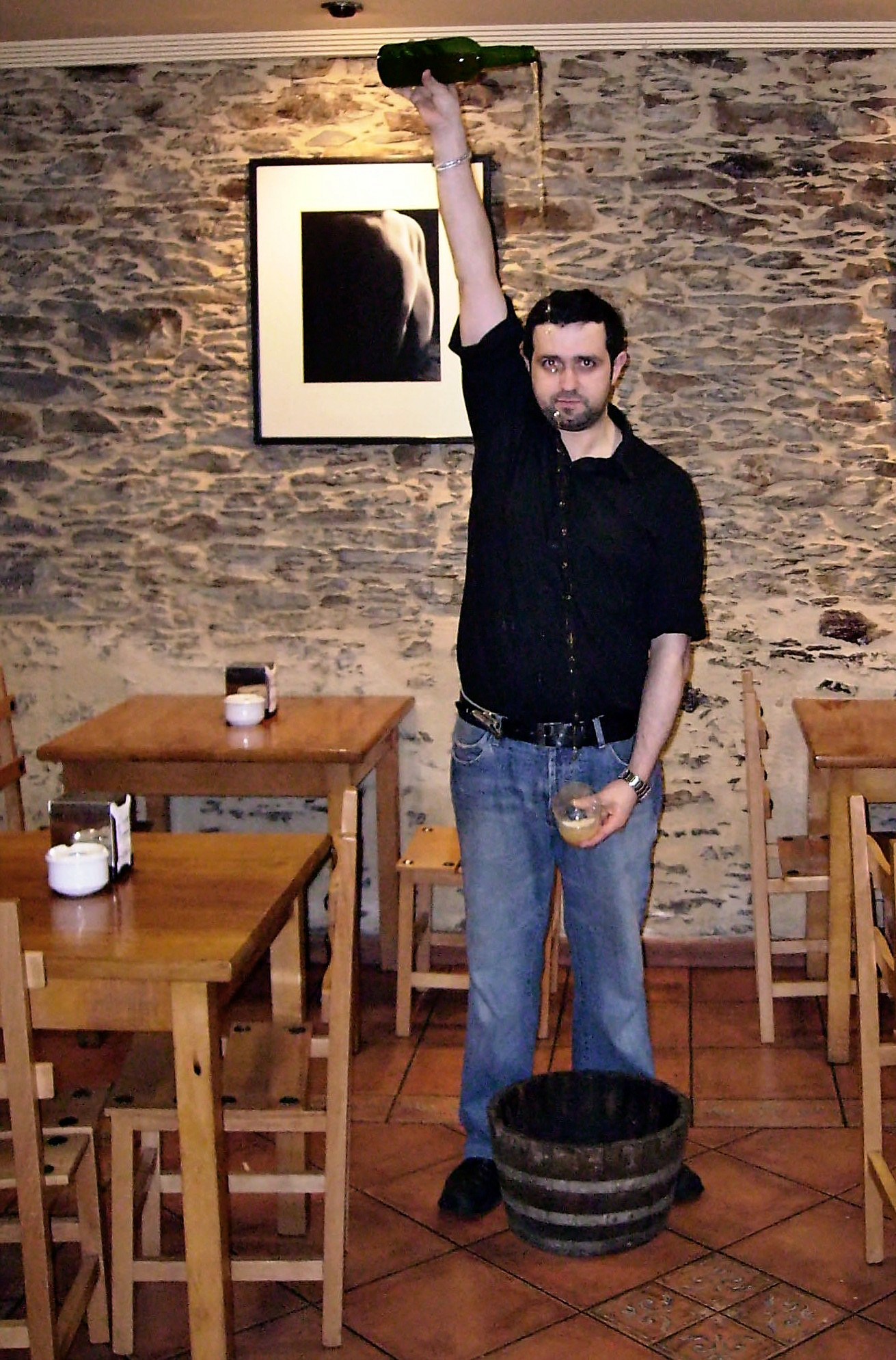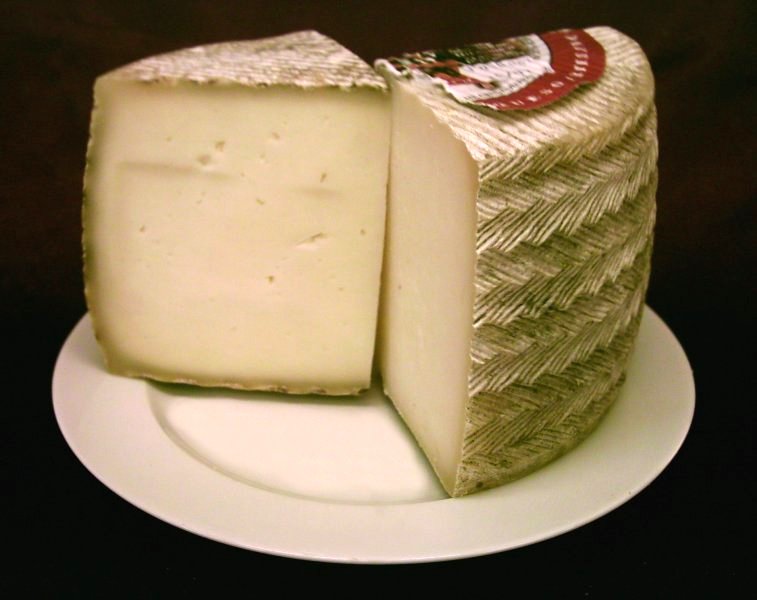|
Afuega'l Pitu
Afuega'l pitu is an unpasteurised cow's milk cheese from Asturias, one of four Asturian cheeses (the others being Cabrales, Gamonedo cheese, and Casín cheese) to have been recognized with Protected Designation of Origin'' (''Denominación de Origen'', DO) by Spain and the European Union. The name literally translates as "strangle the chicken" in the Asturian language and legend is that when the chicken ("pitu" in Asturian) is dead the cheese is ready. It is considered to be one of the oldest Spanish cheeses. Production is centered in the municipalities of Grado, Las Regueras, Morcín, Pravia, Riosa, Salas, and Yernes y Tameza with the municipality of Grado having the largest production and being the headquarters of the council of Denomination of Origin. The cheese is produced all year long although principally in spring and winter due to the elevated fat content in milk in the spring and winter months. Since 2008 it has enjoyed the recognition of the European Union ... [...More Info...] [...Related Items...] OR: [Wikipedia] [Google] [Baidu] |
Asturian Cuisine
Asturian cuisine refers to the typical dishes and ingredients found in the cuisine of the Asturias region of Spain. Foods Asturias is especially known for its seafood, such as fresh squid, crab, shrimp and sea bass. Salmon are caught in Asturian rivers, notably the Sella; the first fish of the season is called ''campanu'' (Bable word for ''campana''), a bell tolled to signal the first catch. Bread Spelt bread (pan d'escanda) is very traditional. Formigos are some kind of French toasts made with crumbled bread and eggs. Bollos preñaos are buns filled with ''chorizo''. Some kind of pancakes called frixuelos, similar to Galician filloas, are typical as dessert. We also find specialties made with cornmeal, such as boroña (round loaf of hard bread), the ''fariñes'', farrapes or ''papes'' (cornmeal porridge), the ''rapa'' (similar to boroña with pieces of bacon inside the dough) and tortos (cornmeal flatbread). Fruits, vegetables and legumes The most common legume in ... [...More Info...] [...Related Items...] OR: [Wikipedia] [Google] [Baidu] |
Spanish Cheeses
A wide variety of cheeses are made throughout the country of Spain. Some of the Spanish cheeses are internationally renowned, such as the Manchego cheese of La Mancha. Some regions are better known for their cheeses than others; 26 cheeses are classified as Protected Designation of Origin (D.O.P.—''Denominación de Origen Protegida'') by Spain and the European Union. Many of the cheeses are manufactured from single types of milk (cow, goat or sheep), but a few are mixtures of different milks, and the milk may be raw, pasteurised or creamy. The cheeses are made in a wide variety of styles including fresh, cured, semi-cured and pressed paste, and some are inoculated with mould to make blue varieties. There is a huge variation in the presentation of cheeses, from the hard, dark-skinned, two-kilo Manchego to the soft, small ''quesitos''. A list of Spanish cheeses follows, grouped by an alphabetical ordering of geographic regions. Andalucía * Queso de las Alpujarras ( P.D.O.) * ... [...More Info...] [...Related Items...] OR: [Wikipedia] [Google] [Baidu] |
Paprika
Paprika ( US , ; UK , ) is a spice made from dried and ground red peppers. It is traditionally made from ''Capsicum annuum'' varietals in the Longum group, which also includes chili peppers, but the peppers used for paprika tend to be milder and have thinner flesh. In some languages, but not English, the word ''paprika'' also refers to the plant and the fruit from which the spice is made, as well as to peppers in the Grossum group (e.g. bell peppers). All capsicum varieties are descended from wild ancestors in North America, in particular Central Mexico, where they have been cultivated for centuries. The peppers were subsequently introduced to the Old World, when peppers were brought to Spain in the 16th century. The seasoning is used to add color and flavor to many types of dishes in diverse cuisines. The trade in paprika expanded from the Iberian Peninsula to Africa and Asia and ultimately reached Central Europe through the Balkans, which was then under Ottoman rule. This he ... [...More Info...] [...Related Items...] OR: [Wikipedia] [Google] [Baidu] |
Afuega'l Pitu
Afuega'l pitu is an unpasteurised cow's milk cheese from Asturias, one of four Asturian cheeses (the others being Cabrales, Gamonedo cheese, and Casín cheese) to have been recognized with Protected Designation of Origin'' (''Denominación de Origen'', DO) by Spain and the European Union. The name literally translates as "strangle the chicken" in the Asturian language and legend is that when the chicken ("pitu" in Asturian) is dead the cheese is ready. It is considered to be one of the oldest Spanish cheeses. Production is centered in the municipalities of Grado, Las Regueras, Morcín, Pravia, Riosa, Salas, and Yernes y Tameza with the municipality of Grado having the largest production and being the headquarters of the council of Denomination of Origin. The cheese is produced all year long although principally in spring and winter due to the elevated fat content in milk in the spring and winter months. Since 2008 it has enjoyed the recognition of the European Union ... [...More Info...] [...Related Items...] OR: [Wikipedia] [Google] [Baidu] |
European Union
The European Union (EU) is a supranational political and economic union of member states that are located primarily in Europe. The union has a total area of and an estimated total population of about 447million. The EU has often been described as a '' sui generis'' political entity (without precedent or comparison) combining the characteristics of both a federation and a confederation. Containing 5.8per cent of the world population in 2020, the EU generated a nominal gross domestic product (GDP) of around trillion in 2021, constituting approximately 18per cent of global nominal GDP. Additionally, all EU states but Bulgaria have a very high Human Development Index according to the United Nations Development Programme. Its cornerstone, the Customs Union, paved the way to establishing an internal single market based on standardised legal framework and legislation that applies in all member states in those matters, and only those matters, where the states have agreed to act ... [...More Info...] [...Related Items...] OR: [Wikipedia] [Google] [Baidu] |
Yernes Y Tameza, Asturias
Yernes y Tameza is a municipality in the Autonomous Community of the Principality of Asturias, Spain. It is situated in the east-central zone of the principality, between mountains high along the Cubia River. It is bordered on the west, north, and northeast by Grado, on the southeast by Proaza, and on the south by Teverga. The municipality has an abrupt topography, most notable in the peak Caldoveiru (1,357 m) and the Tameza River, which crosses the municipality from south to north. It is one of the smallest municipalities in Asturias. Its current population (according to the 2005 census) of 197 (99 male and 98 female) is the smallest among the Asturian municipalities. The province is named after its two parishes, Yernes and Tameza ("y" is Spanish for "and"). The capital is Villabre; other villages include: Fuxóu, Vindías, Villuarrí, and Yernes. The people practice high mountain ranching and subsistence agriculture. In livestock, cattle and horses are the most important, ... [...More Info...] [...Related Items...] OR: [Wikipedia] [Google] [Baidu] |
Salas, Asturias
Salas (also known as San Martin de Salas) is a town and ''concejo'' (municipality) in the Principality of Asturias. It lies on the road from San Sebastián to Santiago de Compostela, and on a small subtributary of the river Narcea. It is bordered on the north by Valdés, Cudillero and Pravia, to south by Belmonte de Miranda, to the east by Pravia, Candamo and Grado, and to the west by Tineo and Valdés. Salas is a mountainous region in which coal-mining and agriculture are the principal industries. The products of this region are sent for export to Cudillero, a small harbour on the Bay of Biscay. Salas is well known as a tourist point and as the birthplace of Fernando de Valdés y Salas. Culture There are several buildings of importance in Salas, the Palacio de Doriga, Palacio de Valdés and Castillo de Salas, among others. Also the romanesque Monasterio de San Salvador, the Monasterio de San Martin and the Colegiata de Santa María la Mayor. Parishes * Alava * Ardes ... [...More Info...] [...Related Items...] OR: [Wikipedia] [Google] [Baidu] |
Riosa, Asturias
Riosa is a municipality and parish (administrative division) in the Autonomous Community of the Principality of Asturias Asturias (, ; ast, Asturies ), officially the Principality of Asturias ( es, Principado de Asturias; ast, Principáu d'Asturies; Galician-Asturian: ''Principao d'Asturias''), is an autonomous community in northwest Spain. It is coextensiv ..., Spain. It is situated in the central mountains of Asturias. Its capital is La Vega. References Municipalities in Asturias Towns in Asturias * {{Asturias-geo-stub ... [...More Info...] [...Related Items...] OR: [Wikipedia] [Google] [Baidu] |
Pravia, Asturias
Pravia is a municipality in the Autonomous Community of the Principality of Asturias in Spain. It is bordered on the north by Cudillero and Muros de Nalón, on the east by Candamo and Soto del Barco, on the west by Cudillero and Salas, and on the south by Candamo and Salas. Since 774, when King Silo established his court at Santianes de Pravia, until the reign of Alfonso II, it was the capital of the kingdom of Asturias The Kingdom of Asturias ( la, Asturum Regnum; ast, Reinu d'Asturies) was a kingdom in the Iberian Peninsula founded by the Visigothic nobleman Pelagius. It was the first Christian political entity established after the Umayyad conquest of V .... Parishes References Municipalities in Asturias * Astures {{Asturias-geo-stub ... [...More Info...] [...Related Items...] OR: [Wikipedia] [Google] [Baidu] |
Las Regueras, Asturias
Las Regueras (Les Regueres en Asturiano) is a municipality in the Autonomous Community of the Principality of Asturias, Spain. It is bordered on the north by Illas and Llanera, on the south by Grado, on the west by Candamo, and on the east by Oviedo Oviedo (; ast, Uviéu ) is the capital city of the Principality of Asturias in northern Spain and the administrative and commercial centre of the region. It is also the name of the municipality that contains the city. Oviedo is located ap ... and Llanera. Parishes * Biedes * L'Escampleru * Santuyanu * Sotu * Tresmonte * Valdunu Politics Notable people * Ramón González (1888–1952), socialist trade union leader References External linksFederación Asturiana de ConcejosQuesería Artesanal Llazana Municipalities in Asturias * {{Asturias-geo-stub ... [...More Info...] [...Related Items...] OR: [Wikipedia] [Google] [Baidu] |




.jpg)